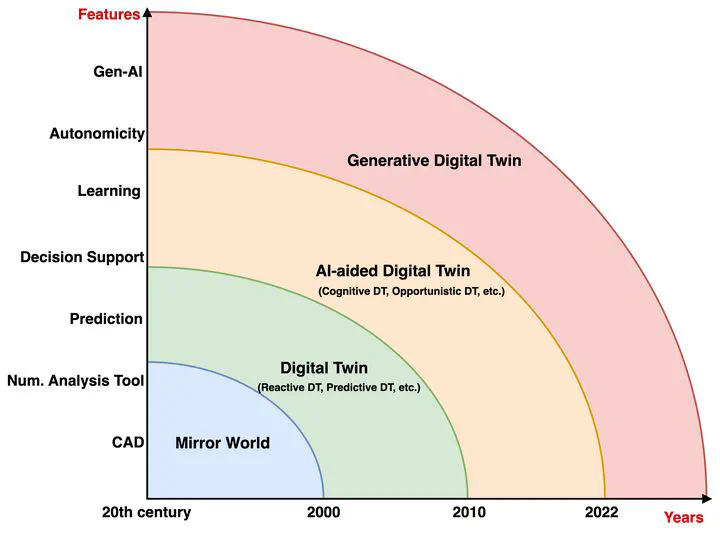Generative Digital Twins: A Novel Approach in the IoT Edge-Cloud Continuum
Aug 16, 2024· ,,·
0 min read
,,·
0 min read
Claudio Savaglio
Vincenzo Barbuto
Fabrizio Mangione
Giancarlo Fortino
 DT evolution: from Mirror World to GDT
DT evolution: from Mirror World to GDTAbstract
Digital Twins (DTs) are software replicas that not only mirrors physical entities but can also proactively predict, control, optimize and simulate their behavior. Born in the manufacturing sector, this concept after an initial hype stayed untouched for decades. The rise of Internet of Things (IoT) and Artificial Intelligence (AI) enabled DT, respectively, to exchange real-world data and to fully exploit it for fulfilling its own goals. Very recently, Generative AI (Gen-AI) methods started being sporadically applied to DT in different contexts and with different targets. After studying the literature, in this article we provide a definition for the Generative DT (GDT) which embraces main distinctive aspects and potential of current and future Gen- AI-aided DTs. In particular, we first disclose the role of Gen-AI in conciliating the model- and the data-driven approach for the development of DTs. Then, we analyze the added value of main Gen-AI architectures for maximizing the performance of DTs operating in the IoT domain and deployed in the edge-cloud continuum. Finally, we illustrate the potential of a GDT in emblematic Smart City scenarios through a use case involving the prediction of vehicles’ trajectories when, due to uncontrolled events, only partial information is accessible. The outlined solution conciliates accuracy and explainability in the trajectory prediction with overall system robustness and effectiveness.
Type
Publication
IEEE Internet of Things Magazine